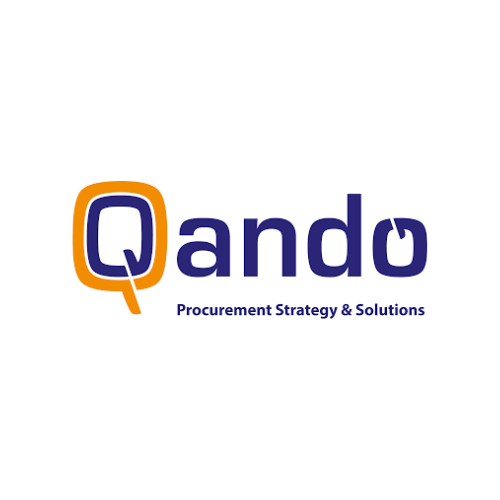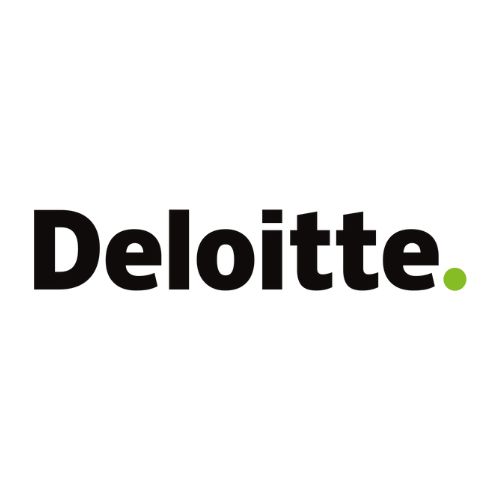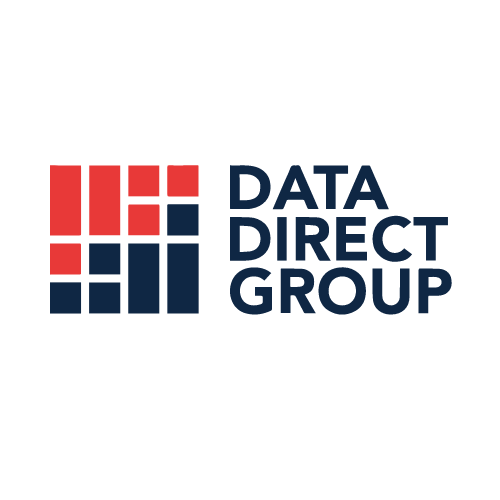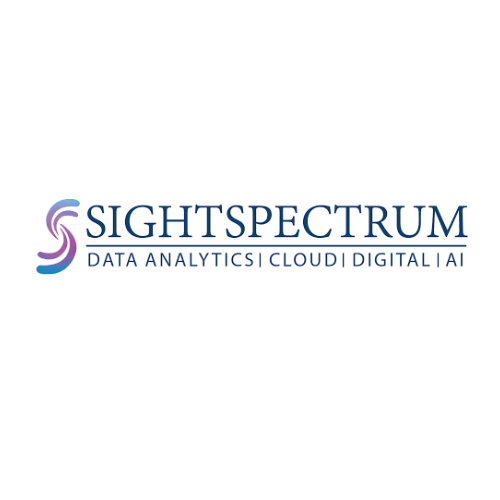Customer Master Data Management (CMDM) is essential for enterprises aiming to maintain accurate, unified, and well-structured customer records. It forms the foundation for various business functions such as sales, marketing, finance, and customer support. Poor management of customer data can result in inefficiencies, revenue loss, compliance issues, and subpar customer experiences.
Customer master data solutions are designed to tackle these challenges by offering centralized platforms and intelligent tools that ensure data consistency, remove duplicates, and enable real-time synchronization across systems. These solutions help organizations create a single source of truth for customer information, leading to better decision-making and enhanced customer engagement across all touchpoints.
In the era of digital transformation, businesses need to adopt a structured, real-time, and accessible customer master data system. A well-maintained customer master facilitates accurate reporting, efficient operations, personalized customer experiences, and enhanced regulatory compliance.
Customer Master Data Model
A Customer Master Data Model is a structured framework that captures essential customer information. It is designed to deliver a single, unified, and accurate view of the customer across multiple departments and applications.
Key Attributes of a Customer Master Data Model
Basic Customer Information:
-
Customer ID – A distinct identifier assigned to each individual customer record.
-
Name (First, Middle, Last / Company Name) – The full name of the person or business entity.
-
Company Name – Relevant only for business-to-business (B2B) customers.
-
Customer Category – Classification such as Individual, Business, Government, or Non-Profit.
-
Contact Details – Includes phone number, email address, and website information.
-
Billing and Delivery Addresses
Financial & Credit Data
Credit Limit
Payment Terms (e.g., Net 30, Net 60)
Tax Identification Number (TIN)
Bank Account Information
-
Accepted Payment Methods ( Credit Card, etc.)
Legal & Compliance Information
Business Registration Number
-
Industry Classification Codes
Risk Rating
Customer Interaction and History
Purchase History
Support Tickets and Complaints
Marketing Preferences
Customer Engagement Score
Segmentation and Preferences
Customer Loyalty Tier
Preferred Communication Channel
-
Special Discounts or Pricing Agreements
Customer Master Data Model in SAP
SAP manages Customer Master as a distinct, configurable module that systematically stores customer information, enabling easy access and maintenance. The data within SAP Customer Master is organized into various views to support different business functions. Some of the standard fields included in the SAP Customer Master are:
General Information
This encompasses vital customer information that is utilized across various company codes and sales areas.
Name (Individual or Company)
Address (Street, City, Pin Code, Country)
Contact Information (Phone, Fax, Email, Website)
Industry Classification
Search Term (Brief description for quick reference)
Tax Reporting Data (VAT, GST, Exemption Certificates)
Sales Area Data
This section includes information essential for sales transactions and order processing. It is specific to a Sales Organization, Distribution Channel, and Division.
-
Sales Organization (Defines the sales reporting structure)
-
Distribution Channel (e.g., Direct Sales, Reseller, Online)
-
Division (Product grouping)
-
Pricing Group (Discounts and special pricing agreements)
-
Shipping Conditions (Preferred delivery methods)
-
Customer Group (Loyalty tiers, business types)
-
Output Determination (Preferences for invoices and documents)
Company Code Data
This section contains financial and accounting information related to the customer.
-
Reconciliation Account (Connects the customer to general ledger accounts)
-
Payment Terms (e.g., Net 30, Net 60, Cash in Advance)
-
Dunning Procedures (Automated reminders and collection policies)
-
Credit Control Area (Credit limits and creditworthiness evaluation)
-
Tax Jurisdiction Codes (Based on customer location)
-
Payment Methods (credit card, etc.)
The SAP website offers numerous resources and detailed guides to help you understand the structure of Customer Master data and customize it within the new S/4HANA system.
Customer Master Data Model in Other ERPs
Below are some useful resources to explore how Client Master data is handled and configured in various ERP systems:
-
Oracle ERP: Utilizes Customer Data Management (CDM) with hierarchical structures to oversee relationships. [Developer Guide
-
Microsoft Dynamics 365: Employs Customer Entities to provide a 360-degree view of customer data. [Developer Guide]
-
Salesforce: Uses Account and Contact objects to manage customer information. [Developer Guide]
How do Teams Benefit from a Unified Customer Master?
-
Marketing: Delivering personalized promotions through customer segmentation.
-
Example: A retail business analyzes past purchases and preferences to send tailored discount coupons via email and mobile alerts.
-
Use-Case: A fashion e-commerce company categorizes customers by previous purchases to suggest products matching their tastes.
-
-
Finance: Ensuring accurate credit risk evaluations and invoicing processes.
-
Example: A financial firm uses a consolidated customer profile to evaluate creditworthiness by reviewing transaction histories, outstanding debts, and payment patterns.
-
Use-Case: A global corporation manages timely invoice payments by identifying customers with late payment records and adjusting their credit limits accordingly.
-
-
Operations: Enhancing order fulfillment efficiency and customer service quality.
-
Example: A logistics provider consolidates customer data from various platforms to enable smooth order tracking and delivery.
-
Use-Case: An auto parts supplier minimizes shipping mistakes by verifying customer addresses and purchase histories before dispatch.
-
-
Compliance: Strengthening adherence to data protection regulations.
-
Example: A healthcare organization complies with GDPR by maintaining a secure, centralized customer data system aligned with privacy laws.
-
Use-Case: A bank routinely audits customer information to ensure KYC compliance, minimizing regulatory risks.
-
Getting Started with a Customer Master Data Project
Usually, customers who come to us for a Customer Master Data project have an inefficient setup for managing their customer data. This often results in numerous legacy issues within their database that must be resolved before implementing new processes.
Therefore, a Customer Master Data project generally takes a twofold approach:
Addressing Legacy Data
-
Assessment & Identification:
-
Perform a comprehensive data audit to identify duplicate, redundant, and outdated records.
-
Example: A telecom provider detects and consolidates duplicate customer records to avoid redundant billing.
-
-
Data Standardization & Normalization:
-
Establish standardized formats for names, addresses, and contact information across all platforms.
-
Example: A global retail chain standardizes customer address formats to ensure uniform shipping details.
-
-
Data Cleansing & Validation:
-
Use specialized tools like Trillium, Informatica, and Talend to cleanse and verify data accuracy.
-
Use-Case: A banking institution employs Informatica MDM to validate and correct customer tax identification numbers.
-
Governing Future Customer Data
-
Define Data Stewardship & Ownership Frameworks:
-
Designate specific roles responsible for data governance and ongoing oversight.
-
Example: A healthcare organization appoints data stewards to ensure the accuracy and Assure of patient records.
-
-
Utilize AI-Powered Data Enrichment Solutions:
-
Incorporate external data providers such as ZoomInfo and Dun & Bradstreet to fill in missing information.
-
Use-Case: A B2B manufacturer enhances incomplete customer profiles by integrating real-time financial data.
-
Although it is possible to carry out a customer master data project internally, it typically demands numerous software platforms, multiple SaaS subscriptions, access to various private databases, and more.
Often, the expertise, technical capacity, and available resources required to overhaul a Customer Master are limited, making it a wiser choice to collaborate with specialists who understand the intricacies of such projects.
That said, here are some master data platforms that can assist in managing Customer Master Data:
Software Solutions for CMDM
-
MDM Suites: Informatica MDM, SAP MDG, IBM InfoSphere MDM
-
Example: A global logistics company employs SAP MDG to centralize its customer master data.
-
-
Data Enrichment Tools: Experian, Melissa Data
-
Use-Case: A credit agency leverages Experian to validate and supplement missing credit history information.
-
-
Data Governance Platforms: Collibra, Alation
-
Example: A legal firm manages data policies and ensures compliance using Collibra.
-
Strategies for Managing a Customer Master
Beyond the processes outlined above, there are several effective strategies that can simplify the governance and normalization of client data.
Below are some of these key approaches.
Adopt a Single Source of Truth Approach
Master data systems depend on maintaining a single golden record learn more —a definitive source of truth. Since customer information is often scattered across multiple systems such as CRM, CDP, and others, consolidating data into a single database helps prevent duplication and related issues.
Implementing Role Based Access Controls
One of the primary reasons for poor data quality in a Customer Master—or any multi-domain master data system—is inadequate data stewardship.
Natural complacency and insufficient quality control during data entry and updates often lead to errors. That’s why organizations must implement role-based systems supported by technology-driven processes. These systems help validate data entries, flag conflicting information, automatically enrich missing data, and trigger approval alerts according to a predefined approval workflow.
Deeply Embed AI Systems in Processes
Few industries and fields have been impacted by Artificial Intelligence as profoundly as data management.
One of the largest cost centers and challenges in Master Data Management (MDM) implementations has been the reliance on human effort. Historically, it was difficult for algorithms to accurately interpret and process MRO records without human intervention.
However, with the rise of AI, several independent use cases have emerged in MDM, including:
1. Autonomous Classification: AI systems can automatically extract details such as first name, last name, apartment number, street name, and country of origin from unstructured customer data.
2. Enrichment: Continuously operating AI agents can identify missing information in customer master records and populate those gaps using first- or third-party data sources—often integrated via APIs—without any human involvement.
3. Data Scoring: While fully autonomous AI management of customer master data remains a future goal, AI can significantly improve efficiency today by scoring data records, making human reviews more scalable and effective.
Integrate APIs with First & Third Party Databases
Customer data is typically extensive and complex, covering fields such as personal information, banking details, legal records, and firmographic data for B2B clients.
It’s common for these records to be incomplete. Modern software systems often use APIs from third-party sources to automatically enrich this data. Some key sources include:
1. Contact Databases: Platforms like ZoomInfo and Dun & Bradstreet (D&B) provide detailed individual user data, including email addresses and phone numbers.
2. Tax & Financial Information: D&B also stores transactional and financial data such as Tax Identification Numbers (TIN).
3. Credit Information: Credit bureaus like Equifax and TransUnion offer credit reports and related data that can be integrated into the customer master via APIs.
Within large enterprises, first-party data sources such as CRMs and CDPs serve as rich repositories of customer information, which can be fed back into the Customer Master Data system for enhanced accuracy.
Customer Master Data VS Customer Relationship Management
Although both Customer Master Data Systems and CRM systems handle customer information, they serve different roles within an organization and cater to distinct use cases for different teams.
Below is a brief overview highlighting the key differences between the two.
| Feature | Customer Master Data System | Customer Relationship Management System |
|---|---|---|
| Purpose | Serves as a centralized and authoritative source of customer information, maintaining consistency and accuracy across the entire organization. | Handles customer interactions, focusing on sales, marketing, and customer service with both existing and prospective customers. |
| Data Type | Maintains essential customer attributes such as identification numbers, legal names, contact details, and financial information. | Records dynamic information like customer interactions, purchase history, service requests, and responses to marketing campaigns. |
| Users | Used mainly by data governance teams, IT departments, and other systems that require verified and consistent customer data. | Primarily leveraged by sales, marketing, and customer service teams to handle everyday customer interactions. |
| Integration | Serves as the primary data source for CRM systems, guaranteeing consistent and accurate customer information across all related applications. | Utilizes data from the Customer Master Data System to offer users current and accurate customer details during interactions. |
Customer Master Data VS Customer Data Platform
The concept of a Customer Data Platform (CDP) is relatively new, having been introduced around 2013 when marketing technology consultant David Raab, founder of the CDP Institute, coined the term.
CDPs were created to meet the increasing demand for unified, persistent, and accessible customer data across diverse marketing, sales, and customer service channels. Their primary objective is to break down data silos and deliver a single, comprehensive view of the customer that businesses can leverage to enhance personalization, targeting, and engagement.
Given the overlapping goals of Customer Master Data systems and Customer Data Platforms, confusion is understandable. The table below highlights some of the key differences between them .
| Category | Customer Data Platform (CDP) | Customer Master Database (CMD) |
|---|---|---|
| Primary Purpose | Enhances marketing and customer engagement through real-time data collection and segmentation. | Ensures data governance, accuracy, and consistency by maintaining a single source of truth. |
| Focus | Customer experience & personalization | Data Assure & governance |
| Data Sources | Marketing platforms (CRM, social media, website interactions, email campaigns, ad platforms, customer service logs). | Enterprise-wide sources (ERP, CRM, billing, customer support, external databases). |
| Data Processing | Aggregates, unifies, and segments customer data for real-time use in marketing and engagement. | Cleans, standardizes, de-duplicates, and manages customer data to ensure accuracy. |
| Use Cases |
– Personalized customer experiences – Marketing automation & targeting – Customer journey tracking – Omnichannel campaigns |
– Data accuracy and consistency – Regulatory compliance (GDPR, CCPA) – Unified customer records across ERP, CRM, finance systems – Ensuring trusted data for enterprise use |
| Real-Time vs. Static | Works in real-time, capturing dynamic customer interactions for personalization and analytics. | Provides a static but authoritative customer profile, ensuring accuracy for transactional and operational systems. |
| Ownership & Users | Marketing & Customer Experience teams use it for personalized engagement and analytics. | IT, Data Governance, and Compliance teams manage it for enterprise-wide data reliability. |
| Integration Scope | Integrates with marketing automation tools, analytics platforms, and digital advertising systems. | Integrates with ERP, CRM, financial, supply chain, and operational systems to ensure data accuracy. |






